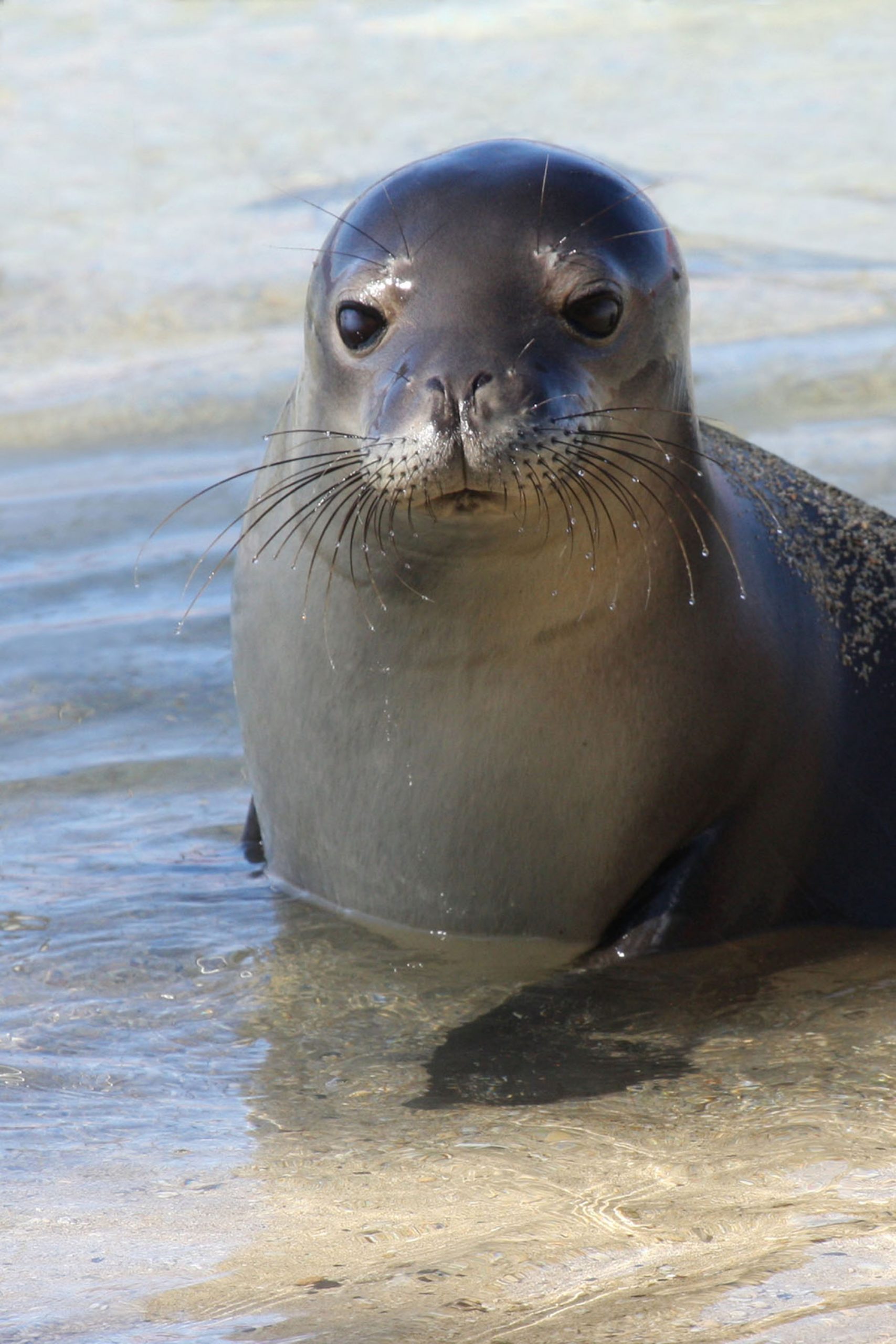There are 18 different species of seals across the globe, but the Hawaiian monk seal is one of the rarest marine mammals in the world. While most seals swim and dive in freezing waters, the Hawaiian monk seal prefers a much warmer environment and enjoys the waters and beaches of the tropical Pacific. In fact, monk seals are endemic to the Islands and are only found in the Hawaiian archipelago. Most of the population can be found in the uninhabited Northwestern Hawaiian Islands, but they also forage around the shores of the main Hawaiian Islands.
Hawaiians have a special phrase for monk seals, ʻIlio holo I ka uaua, which means, “dog that runs in rough water.” (ʻIlio means dog in the Hawaiian language.) Monk seals are also included in some moʻolelo, or oral stories and oli or chants. It’s easy to see why: Adult monk seals are an average of 7.5 feet in length and weigh between 400 and 600 pounds. They enjoy near-constant snacking of fish, crustaceans, eels, and octopuses. Did you know that these cute mammals can hold their breath for up to 20 minutes and dive more than 1,800 feet? Wow!
Hawaiian monk seals are mostly solitary and unlike other seal species, they don’t live in colonies. If you encounter a monk seal, it will likely be alone. You may see their small head, with their big black eyes, bobbing in the sea, or their long, round body beached on the sand sunbathing. But remember, although they look loveable, monk seals can bite! Another good reason to keep your distance: Hawaiian monk seals are protected under the Endangered Species Act, the Marine Mammal Protection Act, and Hawaiʻi state law.
In the late 19th century, these mammals were hunted to near extinction and continue to suffer threats to their survival, including disease, natural predators like sharks and fellow monk seals, as well as human interaction and fishing entanglement. Researchers with the National Oceanic and Atmospheric Administration, or NOAA, estimate that there are only approximately 1,400 monk seals in existence. Of this small number, about 1,100 of these seals live in the Northwestern Hawaiian Islands and the remaining 300 seals live in the main Hawaiian Islands. But there’s good news, the population of the Hawaiian monk seal is slowly rebounding, thanks to tireless conservation efforts. NOAA programs have helped relocate vulnerable young and adult female seals from areas with predatory shark populations, vaccinate the mammals and continue to partner with local fisheries on seal safety. As a result, NOAA estimates that these interventions have resulted in 30 percent of the population staying alive today!

 Facebook
Facebook
 X
X
 Pinterest
Pinterest
 Copy Link
Copy Link


